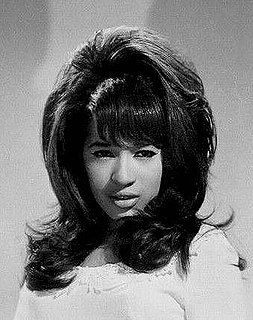 W
WAqua Net is an American brand of hair spray that was notable for its popularity and for its marketing strategy, which aimed to make hair spray "as ubiquitous as soap". The brand is known for its distinctive large purple spray cans, and the spray itself is known for its strong hold and distinctive smell.
 W
WBananadine is a fictional psychoactive substance which is supposedly extracted from banana peels. A hoax recipe for its "extraction" from banana peel was originally published in the Berkeley Barb in March 1967.
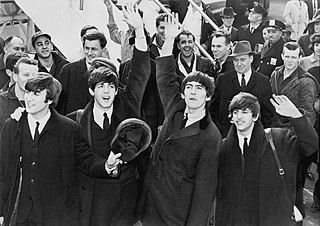 W
WBeatlemania was the fanaticism surrounding the English rock band the Beatles in the 1960s. The group's popularity grew in the United Kingdom throughout 1963, propelled by the singles "Please Please Me", "From Me to You" and "She Loves You". By October, the press adopted the term "Beatlemania" to describe the scenes of adulation that attended the band's concert performances. From the start of 1964, their world tours were characterised by the same levels of hysteria and high-pitched screaming by female fans, both at concerts and during the group's travels. Commentators likened the intensity of this adulation to a religious fervour and to a female masturbation fantasy. Among the displays of deity-like worship, fans would approach the band in the belief that they possessed supernatural healing powers.
 W
WThe bike boom or bicycle craze is any of several specific historic periods marked by increased bicycle enthusiasm, popularity, and sales.
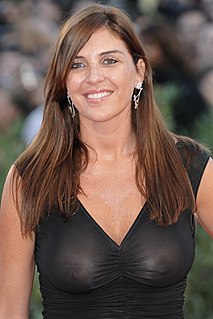 W
WIn Western society, there is an increasing trend towards bralessness among a number of women, especially millennials, who have expressed opposition to and are giving up wearing bras. In 2016, Allure magazine fashion director Rachael Wang wrote, "Going braless is as old as feminism but it seems to be bubbling to the surface more recently as a direct response to Third Wave moments like #freethenipple hashtag campaign, increased trans-visibility like Caitlyn Jenner's Vanity Fair cover ... and Lena Dunham’s show Girls." Going braless, which for many years was considered a political statement, has in recent years become fashionable.
 W
WClub drugs, also called rave drugs, or party drugs are a loosely defined category of recreational drugs which are associated with discothèques in the 1970s and nightclubs, dance clubs, electronic dance music (EDM) parties, and raves in the 1980s to today. Unlike many other categories, such as opiates and benzodiazepines, which are established according to pharmaceutical or chemical properties, club drugs are a "category of convenience", in which drugs are included due to the locations they are consumed and/or where the user goes while under the influence of the drugs. Club drugs are generally used by teens and young adults. This group of drugs is also called "designer drugs", as most are synthesized in a chemical lab rather than being sourced from plants or opiates.
 W
WDalekmania is a 1995 direct-to-video documentary released in the United Kingdom. "Dalekmania" is the name given to the craze or "mania" among children in the United Kingdom in the 1960s for all things associated with writer Terry Nation's creations, the Daleks, who were then regularly appearing in the BBC's television drama series Doctor Who.
 W
WFlower power was a slogan used during the late 1960s and early 1970s as a symbol of passive resistance and nonviolence. It is rooted in the opposition movement to the Vietnam War. The expression was coined by the American Beat poet Allen Ginsberg in 1965 as a means to transform war protests into peaceful affirmative spectacles. Hippies embraced the symbolism by dressing in clothing with embroidered flowers and vibrant colors, wearing flowers in their hair, and distributing flowers to the public, becoming known as flower children. The term later became generalized as a modern reference to the hippie movement and the so-called counterculture of drugs, psychedelic music, psychedelic art and social permissiveness.
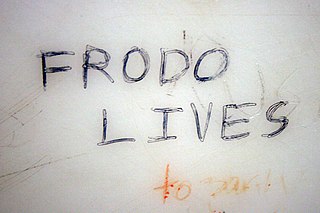 W
W"Frodo Lives!" was a popular counterculture slogan in the 1960s and 1970s, referring to the character Frodo Baggins from J. R. R. Tolkien's fantasy novel The Lord of the Rings. The term was used frequently in graffiti, buttons, bumper-stickers, T-shirts, and other materials. It was commonly associated with the hippie movement. Other examples of use include a Frodo Lives album released by Smash Records and merchandising items for the New Line Cinema The Lord of the Rings film trilogy. The phrase was also displayed during the activation of a computer virus in the early 1990s, in which the text 'Frodo Lives!' was displayed in large letters with a moving border.
 W
WA geodesic dome is a hemispherical thin-shell structure (lattice-shell) based on a geodesic polyhedron. The triangular elements of the dome are structurally rigid and distribute the structural stress throughout the structure, making geodesic domes able to withstand very heavy loads for their size.
 W
WGo-go dancers are dancers who are employed to entertain crowds at nightclubs or other venues where music is played. Go-go dancing originated in the early 1960's, at the French bar, 'Whisky a Gogo', located in Juan-les-Pins.. It then licensed its name to the very popular Los Angeles rock club Whisky a Go Go which opened in January 1964, which chose the name to reflect the already popular craze of go-go dancing. Many 1960s-era clubgoers wore miniskirts and knee-high, high-heeled boots, which eventually came to be called go-go boots. Night club promoters in the mid‑1960s then conceived the idea of hiring women dressed in these outfits to entertain patrons.
 W
WA God's eye is a spiritual and votive object made by weaving a design out of yarn upon a wooden cross. Often several colors are used. They are commonly found in Mexican and Mexican American communities, among both Indigenous and Catholic peoples.
 W
WGreasers are a youth subculture that emerged in the 1950s and early 1960s from predominantly working class and lower class teenagers and young adults in the United States. The subculture remained prominent into the mid-1960s and was embraced by, or associated with Hispanic and Latino Americans generally, along with Italian-Americans and other Mediterraneans, and some outside these ethnicities who embraced the greaser culture or aesthetic. Rock and roll, rockabilly and doo-wop were the main musical expressions, along with hot rod Kustom Kulture, and clothing styles including the Zoot suit or work- and motorsport-clothing, like denim, and leather jackets.
 W
WA lava lamp is a decorative lamp, invented in 1963 by British entrepreneur Edward Craven Walker, the founder of the lighting company Mathmos. The lamp consists of a bolus of a special coloured wax mixture inside a glass vessel, the remainder of which contains clear or translucent liquid. The vessel is placed on a box containing an incandescent light bulb whose heat causes temporary reductions in the density of the wax and surface tension of the liquid. As the warmed wax rises through the surrounding liquid, it cools, loses its buoyancy, and falls back to the bottom of the vessel in a cycle that is visually suggestive of pāhoehoe lava, hence the name. The lamps are designed in a variety of styles and colours.
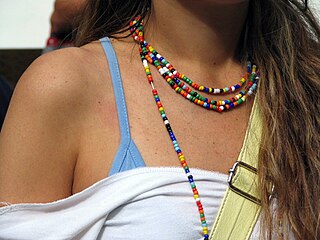 W
WLove beads are one of the traditional accessories of hippies. They consist of one or more long strings of beads, frequently handmade, worn around the neck by both sexes. The love bead trend probably evolved from the hippie fascination with non-Western cultures, such as those of Africa, India, and Native America, which make common use of similar beads.
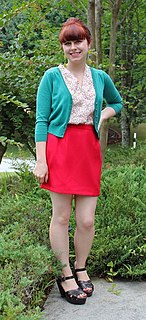 W
WA miniskirt is a skirt with its hemline well above the knees, generally at mid-thigh level, normally no longer than 10 cm (4 in) below the buttocks; and a dress with such a hemline is called a minidress or a miniskirt dress. A micro-miniskirt or microskirt is a miniskirt with its hemline at the upper thigh, at or just below crotch or underwear level.
 W
WMod is a subculture that began in London and spread throughout Great Britain and elsewhere, eventually influencing fashions and trends in other countries, and continues today on a smaller scale. Focused on music and fashion, the subculture has its roots in a small group of stylish London-based young men in the late 1950s who were termed modernists because they listened to modern jazz. Elements of the mod subculture include fashion ; music ; and motor scooters. In the mid-1960s, the subculture listened to power pop rock groups with mod following, such as The Who and The Small Faces, after the peak Mod era. The original mod scene was associated with amphetamine-fuelled all-night dancing at clubs.
 W
WThe Nehru jacket is a hip-length tailored coat for men or women, with a mandarin collar, and with its front modelled on the Indian achkan or sherwani, a garment worn by Jawaharlal Nehru, the Prime Minister of India from 1947 to 1964.
 W
WA novelty song is a type of song built upon some form of novel concept, such as a gimmick, a piece of humor, or a sample of popular culture. Novelty songs partially overlap with comedy songs, which are more explicitly based on humor. Novelty songs achieved great popularity during the 1920s and 1930s. They had a resurgence of interest in the 1950s and 1960s. The term arose in Tin Pan Alley to describe one of the major divisions of popular music; the other two divisions were ballads and dance music. Humorous songs, or those containing humorous elements, are not necessarily novelty songs.
 W
WPaper clothing, in the form of women's dresses and other clothes made from disposable cellulose fabric, was a short-lived fashion novelty item in the United States in the 1960s.
 W
W"Paul is dead" is an urban legend and conspiracy theory alleging that English musician Paul McCartney, of the Beatles, died on 9 November 1966 and was secretly replaced by a look-alike. The rumour began circulating around 1967, but grew in popularity after being reported on American college campuses in late 1969. Proponents based the theory on perceived clues found in Beatles songs and album covers. Clue-hunting proved infectious, and within a few weeks had become an international phenomenon.
 W
WPsychedelic rock, also referred to as psychedelia, is a diverse style of rock music inspired, influenced, or representative of psychedelic culture, which is centred on perception-altering hallucinogenic drugs. The music is intended to replicate and enhance the mind-altering experiences of psychedelic drugs, most notably LSD. Many psychedelic groups differ in style, and the label is often applied spuriously.
 W
WSpock is a character in the Star Trek media franchise. Spock, who was originally played by Leonard Nimoy, first appeared in the original Star Trek series serving aboard the starship USS Enterprise (NCC-1701) as science officer and first officer, and later as commanding officer of two iterations of the vessel. Spock's mixed human-Vulcan heritage serves as an important plot element in many of the character's appearances. Along with Captain James T. Kirk and Dr. Leonard "Bones" McCoy, he is one of the three central characters in the original Star Trek series and its films.
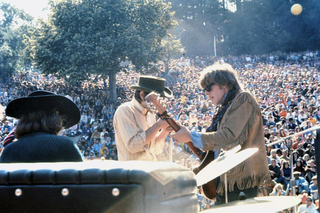 W
WThe Summer of Love was a social phenomenon that occurred during the summer of 1967, when as many as 100,000 people, mostly young people sporting hippie fashions of dress and behavior, converged in San Francisco's neighborhood of Haight-Ashbury. More broadly, the Summer of Love encompassed the hippie music, hallucinogenic drug, anti-war, and free-love scene throughout the West Coast of the United States, and as far away as New York City.
 W
WSurf music is rock music associated with surf culture, particularly as found in Southern California. It was especially popular from 1962 to 1964 in two major forms. The first is instrumental surf, distinguished by reverb-heavy electric guitars played to evoke the sound of crashing waves, largely pioneered by Dick Dale and the Del-Tones. The second is vocal surf, which took elements of the original surf sound and added vocal harmonies, a movement led by the Beach Boys.
 W
WTake Ivy is a 1965 fashion photography book which documents the attire of Ivy League students from the 1960s. The New York Times described it as "a treasure of fashion insiders". Take Ivy has been the Ivy League bible for Japanese baby boomers and has also influenced a "neo-Ivy" style in recent years. The book has sold over fifty thousand copies worldwide. Original copies are rare in the West, garnering auction prices as high as $2,000.
 W
WTie-dye is a modern term invented in the mid-1960s in the United States for a set of ancient resist-dyeing techniques, and for the products of these processes. The process of tie-dye typically consists of folding, twisting, pleating, or crumpling fabric or a garment and binding with string or rubber bands, followed by application of dye(s). The manipulations of the fabric prior to the application of dye are called resists, as they partially or completely prevent the applied dye from coloring the fabric. More sophisticated tie-dyes involve additional steps, including an initial application of dye prior to the resist, multiple sequential dye and resist steps, and the use of other types of resists and discharge.
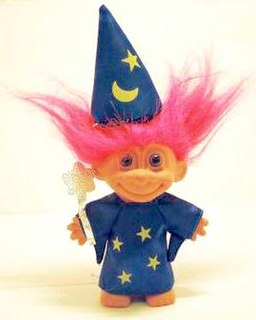 W
WA Troll Doll is a type of plastic doll with furry up-combed hair depicting a troll, also known as a Dam doll after their creator Danish woodcutter Thomas Dam. The toys are also known as good luck trolls, or gonk trolls in the United Kingdom.
 W
WThe twist is a dance that was inspired by rock and roll music. From 1959 to the early sixties it became a worldwide dance craze, enjoying immense popularity while drawing controversies from critics who felt it was too provocative. It inspired dances such as the Jerk, the Pony, the Watusi, the Mashed Potato, the Monkey, and the Funky Chicken, but none were as popular.
 W
WThe Watusi is a solo dance that enjoyed brief popularity during the early 1960s. It was one of the most popular dance crazes of the 1960s in the United States. "Watusi" is a former name for the Tutsi people of Africa, whose traditions include spectacular dances. The naming of the American dance may have been inspired, in particular, by a scene in the 1950 film King Solomon's Mines which featured Tutsi dancers, or by its sequel Watusi.